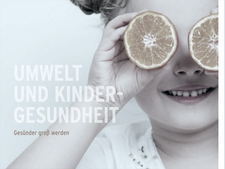-
Topics
subnavigation
Topics
Electromagnetic fields
- What are electromagnetic fields?
- Static and low-frequency fields
- Radiation protection relating to the expansion of the national grid
- High-frequency fields
- Radiation protection in mobile communication
Optical radiation
Ionising radiation
- What is ionising radiation?
- Radioactivity in the environment
- Applications in medicine
- Applications in daily life and in technology
- Effects
- What are the effects of radiation?
- Effects of selected radioactive materials
- Consequences of a radiation accident
- Cancer and leukaemia
- Genetic radiation effects
- Individual radiosensitivity
- Epidemiology of radiation-induced diseases
- Ionising radiation: positive effects?
- Risk estimation and assessment
- Radiation protection
- Nuclear accident management
- Service offers
-
The BfS
subnavigation
The BfS
- About us
- Science and research
- Laws and regulations
- BfS Topics in the Bundestag
- Links
Environment and children's health – growing up healthier
Federal authorities publish comprehensive guidebook on children's health
Children often respond more sensitive than adults to harmful environmental influences. Although a number of chemicals have been banned for toys, the concentration of problematic substances in house dust and in the room air, part of which stem from objects of everyday life, can still be very high. This is particularly evident in classrooms and children’s bedrooms which are often highly con-taminated by undesirable substances.
Children often respond more sensitive than adults to harmful environmental influences. Although a number of chemicals have been banned for toys, the concentration of problematic substances in house dust and in the room air, part of which stem from objects of everyday life, can still be very high. This is particularly evident in classrooms and children’s bedrooms which are often highly con-taminated by undesirable substances.
The authors of the guidebook "Environment and children’s health – growing up healthier", inform about this topic. The guidebook which is available free of charge is published by four federal authorities:
- The Federal Office for Radiation Protection (BfS),
- The Federal Institute for Risk Assessment (BfR),
- The Robert-Koch-Institute (RKI), and
- The German Environment Agency (UBA).
Apart from numerous tips as to healthy interior spaces, the guidebook contains much practical in-formation on environmentally caused infantile diseases or on health care measures for children, for example on safe children’s furniture and seats or on the handling of electromagnetic radiation emitted by audio baby monitors and other telephones.
Life quality of children in interior spaces
Some children and youths spend more than 90 per cent of their time in interior spaces. The guide-book for parents "Environment and children's health – growing up healthier"
thus addresses in detail the life quality of children in interior spaces, among others in classrooms. Depending on age group and type of school, children spend up to eight hours in classrooms, in case of day-care centres even more. In these spaces, however, too high concentrations of carbon dioxide and fine dusts are frequently measured. Especially after renovation measures, undesirable substances may be emitted by building products or new pieces of furniture. On the other hand, mould formation may occur in school buildings that are older or have structural defects.
Through bad air, children may become tired and get headaches. That impairs their concentration and thus their learning outcomes. Ventilating intensively on a regular basis with wide open windows and not only during breaks but also during class is thus particularly important. Ventilating dur-ing breaks is especially in the summertime not sufficient because the exchange of air between ex-terior and interior areas is lower as a result of the small temperature difference. Healthy breathing air is at least as important for the learning results as a good diet and sufficient sleep. It also applies to children’s bedrooms: regular ventilation is needed. However, the UBA advises against the use of every type of perfume spray or other air fresheners. Such products bring additional chemicals into the indoor air and conceal a bad air quality.
Children behave differently than adults
The parent guidebook also points out: Children behave differently than adults. They crawl and fre-quently play on the ground; thus they may be exposed to larger amounts of harmful substances than adults. The probability of taking up harmful substances may also increase: Through the hand-to-mouth contact typical of children or sucking objects. Parents should keep this in mind especially when buying items for children. For example, when buying new toys it is essential to pay attention to their condition. Products with unpleasant odours or which have been provided with fragrance, should be avoided.
A good guide in the selection of children’s items is offered by the GS seal of safety and the Blue Angel for eco-friendly and low-pollution products. The authors deal in detail with what should be paid attention to when buying changing-tables, bathtubs or children’s high chairs. Furthermore, they give tips for relocation with small children.
Precautionary measures for audio baby monitors, WLAN routers and mobile phones
Precautions can also be taken when buying audio baby monitors, WLAN routers and mobile phones. They all use radio waves – so-called electromagnetic fields – for data transmission. Limit values minimise the exposure. However, children are more sensitive than adults. And they will use these technologies all their lives. The Federal Office for Radiation Protection therefore advises to take precautions and to keep the exposure as low as possible. How to do this without abandoning the benefits of mobile phone and audio baby monitor, is explained by the BfS experts in the new guidebook. There are already big differences in the case of audio baby monitors. The radiation emitted by products with the Blue Angel is lower than that emitted by other devices. Note: Dis-tance reduces exposure. The audio baby monitor should be placed as far away from the cot as pos-sible. Another tip: Not only are models with rechargeable battery more practical but they also emit less radiation than those with power supply.
Mobile phones should generally be banned from children’s rooms. They are not appropriate toys for babies and toddlers because the highest radiation exposure in everyday life is emitted by mo-bile phone while its antenna is transmitting – that goes for adults too. Children should only make calls by mobile phone when it is absolutely necessary. It is better to use the well-known landline telephone with a cord. When using cordless phones, exposure is also clearly lower than when using mobile phones. When buying mobile phones and cordless phones it is best to look for low-radiation devices from the outset. WLAN access point, WLAN routers and base stations of cordless phones should preferably be placed in the hall or in another room where one does not stay permanently. Bedrooms and children’s bedrooms, however, are not suitable. WLAN routers can also be switched off when they are not used. This is especially recommendable at night.
State of 2013.09.11




